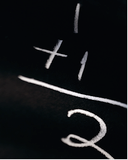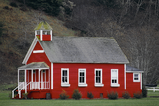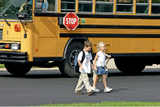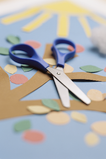 Hunter would traditionally be in kindergarten next year.
Hunter would traditionally be in kindergarten next year.Although we're definitely not going the "traditional" route when it comes to age-grades and curriculum (that is, following the standard "what your kid should know when") and California does not require testing, state educational standards are a good thing to know and can also be a good resource.
Most of this stuff, he already knows (including everything in the reading, math, and science department), but there are a lot of things I thought were interesting and gave me some ideas, like the health section and the physical education section.
Some he already has general knowledge of, but just require a little more talking through it such as "Describe the benefits of being physically active". Others we haven't even touched, such as "Name and perform folk/traditional dances from the United States and other countries". And still others, he probably can do, I've just never even thought to try, such as "Land on both feet after taking off on one foot and on both feet".
I thought it would be an interesting thing to share though. It is kind of long but a lot of it is really basic stuff, like "Distinguish letters from words", "Know that sets with larger numbers have more objects in them than sets with smaller numbers", and "Know stories sometimes give plants and animals attributes they do not really have". So, enjoy!
NOTE: I've simplified some of the wording in this document, mostly in English Language Arts and Math (i.e., changing "Match all consonant and short-vowel sounds to appropriate letters" to "Know the sounds of letters (consonants and short vowels)") It sure makes it easier to understand but I kind of got tired of it after a while and the rest are pretty much as-is. Also, the subcategories (i.e. dividing standards into reading, print concepts, writing, etc.) are my own. The actual documents with these standards can be found here.
NOTE: I've simplified some of the wording in this document, mostly in English Language Arts and Math (i.e., changing "Match all consonant and short-vowel sounds to appropriate letters" to "Know the sounds of letters (consonants and short vowels)") It sure makes it easier to understand but I kind of got tired of it after a while and the rest are pretty much as-is. Also, the subcategories (i.e. dividing standards into reading, print concepts, writing, etc.) are my own. The actual documents with these standards can be found here.
Reading
- Know all upper and lowercase letters
- Know the sounds of letters (consonants and short vowels)
- Sound out simple two- and three- letter words
- Recognize and create rhyming words
- Tell the beginning and ending sounds in one-syllable words
- Count the number of sounds in simple words (i.e. cat = /k/ - /a/ - /t/)
- Tell the difference of similar sounds (i.e. /th/ and /f/)
- Tell how many syllables are in a word (i.e. read-ing, kan-ga-roo)
- Read simple sight words (i.e. the, and)
Print Concepts
- Distinguish letters from words
- Know that when you change letters in a word, the word changes (i.e. sad and sat)
- Know that sentences are made up of separate words
- Know that printed materials provide information
- Identify types of everyday text (i.e. storybooks, poems, newspapers, signs, labels)
- Identify the front cover, back cover, and title page of a book
- Locate the title, table of contents, name of author, and name of illustrator in a book
- Use pictures and context to make predictions about story content
Writing
- Write all upper and lowercase letters (using proper form and spacing)
- Write left-to-right and top-to-bottom
- Write about experiences, stories, people, objects, or events (using phonetic spelling)
Speaking, Listening, and Understanding
- Speak in complete, coherent sentences
- Share information and ideas (in complete, coherent speech)
- Retell familiar stories
- Recite short poems, rhymes, and songs
- Relate an experience or creative story in a logical sequence
- Tell the difference between fantasy and realistic text
- Ask and answer questions about elements in books
- Connect life experiences to the information and events in texts
- Describe common objects and events (in both general and specific language)
- Sort common words into categories (i.e. colors, shapes, foods)
- Understand and follow one-and two-step spoken directions
Numbers
- Count, recognize, represent, name, and order a number of objects (up to 30)
- Compare sets of objects (up to ten objects in each group) and tell which set is equal to, more than, or less than the other
- Use manipulatives to find the answers to addition and subtraction problems (for two numbers that are each less than 10)
- Tell when an estimate is reasonable or not
- Sort objects into particular groups (i.e. all these balls are green, all those are red)
- Compare the length, weight, and capacity of objects (i.e. shorter, longer, taller, lighter, heavier, or holds more)
- Know that sets with larger numbers have more objects in them than sets with smaller numbers
Time
- Demonstrate an understanding of concepts of time (i.e. morning, afternoon, evening, today, yesterday, tomorrow, week, year)
- Recognize tools that measure time (i.e. clock, calendar)
- Name the days of the week
- Know the time of everyday events (to the nearest hour) (i.e. lunchtime is 12 o'clock; bedtime is 8 o'clock)
Geometry
- Identify and describe common geometric objects (e.g., circle, triangle, square, rectangle, cube, sphere, cone).
- Compare shapes and objects by common attributes (i.e. position, shape, size, roundness, number of corners)
Mathematical Thinking
- Ask questions; collect data; and record the results (using objects, pictures, and picture graphs)
- Determine the approach, materials, and strategies to be used to solve a problem
- Use tools and strategies to model problems (such as manipulatives or sketches)
- Explain the reasoning you used to solve a problem (with concrete objects and/or pictorial representations)
- Make calculations and check the validity of the results
Social Studies
- Understand that being a good citizen involves acting in certain ways
- Follow rules, such as sharing and taking turns, and know the consequences of breaking them
- Learn examples of honesty, courage, determination, individual responsibility, and patriotism in American and world history from stories and folklore
- Know beliefs and related behaviors of characters in stories from times past (and understand the consequences of the characters' actions)
- Know national and state symbols and icons (such as the national and state flags, the bald eagle, and the Statue of Liberty)
- Match simple descriptions of work that people do and the names of related jobs (at the school, in the local community, and from historical accounts)
Geography
- Compare and contrast the locations of people, places, and environments (and describe their characteristics)
- Know the terms near/far, left/right, and behind/in front
- Know the difference between land and water on maps and globes
- Locate general areas referenced in historical legends and stories on maps and globes
- Know traffic symbols and map symbols (i.e. those for land, water, roads, cities)
- Make maps and models of neighborhoods (incorporating such structures as police and fire stations, airports, banks, hospitals, supermarkets, harbors, schools, homes, places of worship, and transportation lines)
- Be familiar with the school's layout, environs, and the jobs people do there
- Place days, weeks, and months in proper order
History
- Understand that history relates to events, people, and places of other times
- Know the purposes of, and the people and events honored in, commemorative holidays and the human struggles that were the basis for the events (i.e. Thanksgiving, Independence Day, Washington's and Lincoln's Birthdays, Martin Luther King Jr. Day, Memorial Day, Labor Day, Columbus Day, Veterans Day)
- Know American legends and historical accounts (through the stories of people such as Pocahontas, George Washington, Booker T. Washington, Daniel Boone, and Benjamin Franklin)
- Understand how people lived in earlier times and how their lives would be different today (i.e. getting water from a well, growing food, making clothing, having fun, forming organizations, living by rules and laws)
Physical Science
- Know objects can be described in terms of the materials they are made of (i.e. clay, cloth, paper) and their physical properties (i.e. color, size, shape, weight, texture, flexibility, attraction to magnets, floating, sinking)
- Know water can be a liquid or a solid and can be made to change back and forth from one form to the other
- Know water left in an open container evaporates (goes into the air) but water in a closed container does not
Life Science
- Know how to observe and describe similarities and differences in the appearance and behavior of plants and animals (i.e. seed-bearing plants, birds, fish, insects)
- Know major structures of common plants and animals (i.e.stems, leaves, roots, arms, wings, legs)
- Know stories sometimes give plants and animals attributes they do not really have
Earth Science
- Know earth is composed of land, air, and water
- Know characteristics of mountains, rivers, oceans, valleys, deserts, and local landforms
- Know changes in weather occur from day to day and across seasons
- Know that weather changes affects Earth and its inhabitants
- Know how to identify resources from Earth that are used in everyday life (and understand that many resources can be conserved)
Scientific Thinking
- Know that scientific progress is made by asking meaningful questions and conducting careful investigations
- Use the five senses to observe common objects
- Describe the properties of common objects
- Describe objects by relative position (i.e. above or below)
- Sort common objects by physical attributes (i.e. color, shape, texture, size, weight)
- Communicate observations (orally and through drawings)
General
- Participate three to four days each week in moderate to vigorous physical activities that increase breathing and heart rate
- Sustain continuous movement for increasing periods of time while participating in moderate to vigorous physical activity
Physical Skills
- Perform locomotor and nonlocomotor movements to a steady beat
- Clap in time to a simple beat
- Climb a ladder, jungle gym, or apparatus
- Jump a swinging rope held by others
- Land on both feet after taking off on one foot and on both feet
- Hang from overhead bars for increasing periods of time
- Stretch shoulders, legs, arms, and back without bouncing
- Roll smoothly in a forward direction, without stopping or hesitating, emphasizing a rounded form
- Demonstrate the underhand movement (throw) pattern
- Demonstrate the overhand movement (throw) pattern
- Demonstrate the two-handed overhead (throw) pattern
- Catch, showing proper form, a gently thrown ball
- Catch a self-tossed ball
- Balance oneself demonstrating momentary stillness (in symmetrical and asymmetrical shapes using body parts other than both feet as a base of support)
- Travel over, under, in front of, behind, and through objects and over, under, in front of, and behind partners
- Change speeds in response to tempos, rhythms, and signals while traveling in straight, curved, and zigzag pathways (using the following locomotor movements: walking, running, leaping, hopping, jumping, galloping, sliding, and skipping)
- Change direction from forward and back and right and left in response to tempos, rhythms, and signals while walking, running, hopping, and jumping (i.e., locomotor skills)
- Demonstrate the difference between slow and fast, heavy and light, and hard and soft while moving
Form
- Explain the difference between under and over, behind and in front of, next to and through, up and down, forward and backward, and sideways
- Use personal space, general space, and boundaries and discuss why they are important
- Explain base of support
- Identify the locomotor skills of a walk, jog, run, hop, jump, slide, and gallop
- Explain the role of the eyes when striking objects with the hands, arms, and feet
- Identify the point of contact for kicking a ball in a straight line
- Describe the position of the fingers in the follow-through phase of bouncing a ball continuously
Anatomy
- Know parts of the body: (the head, shoulders, neck, back, chest, waist, hips, arms, elbows, wrists, hands, fingers, legs, knees, ankles, feet, and toes)
- Know the location of the heart and explain that it is a muscle
- Know the location of the lungs and explain the role of the lungs in the collection of oxygen
- Know that the body is composed of bones, organs, fat, and other tissues
- Know that physical activity increases the heart rate
- Know that strong muscles help the body to climb, hang, push, and pull
- Describe the role of muscles in moving the bones
- Know the body part involved when stretching
- Describe the role of water as an essential nutrient for the body
- Know that nutritious food provides energy for physical activity
- Identify indicators of increased capacity to participate in vigorous physical activity
Social
- Identify the feelings that result from participation in physical activity
- Participate willingly in physical activities
- Participate in physical activities that are enjoyable and challenging
- Demonstrate the characteristics of sharing in a physical activity
- Describe how positive social interaction can make physical activity with others more fun
- Participate as a leader and a follower during physical activities
- Demonstrate an awareness of personal space, general space, and boundaries while moving in different directions and at high, medium, and low levels in space
Nutrition
- Name a variety of healthy foods and explain why they are necessary for good health
- Identify a variety of healthy snacks
- Recognize the importance of a healthy breakfast
- Select nutritious snacks
- Plan a nutritious breakfast
- Choose healthy foods in a variety of settings
- Recognize that not all products advertised or sold are good for them
- Explain how to ask family members for healthy food options
Physical Activity
- Describe the benefits of being physically active.
- Describe ways to participate regularly in active play and enjoyable physical activities
Science
- Describe their own physical characteristics
- Explain that living things grow and mature
- Name body parts and their functions
- Name and describe the five senses
- Identify practices that are good for the environment, such as turning off lights and water, recycling, and picking up trash
Safety
- Identify safety rules for the home, the school, and the community
- Know ways to stay safe when riding in a bus or other vehicle
- Know ways to stay safe when crossing streets, riding a bicycle, or playing
- Know how to cross the street safely
- Show how to answer the phone in a safe way
- Know the difference between appropriate and inappropriate touching
- Know that everyone has the right to tell others not to touch his or her body
- Know what a stranger is and how to avoid contact with strangers
- Role-play what to do if a stranger at home, in a car, or on the street approaches you
- Identify trusted adults at home and at school
- Identify trusted adults who can help in emergency situations
- Know how to ask trusted adults for help
- Identify emergency situations
- Know situations when it is necessary to seek adult help or call 9-1-1
- Know how to ask a trusted adult for help or call 9-1-1
- Define and explain the dangers of weapons
- Know the importance of telling a trusted adult if you see or hear about someone having a weapon
- Know how to tell a trusted adult when you or a friend find a weapon
- Know why medicines are used
- Know that medicines can be helpful or harmful
- Know that medicines should be taken only under the supervision of a trusted adult
- Know that anything may be poisonous or cause harm if used unsafely
- Know that some household products are harmful if ingested or inhaled
- Know that tobacco smoke is harmful to health and should be avoided
Social
- Know school rules about getting along with others
- Follow rules for safe play and safety routines
- Know the characteristics of bullying
- Identify a variety of emotions
- Express emotions appropriately
- Describe and practice situations when it is appropriate to use “Please,” “Thank you,” “Excuse me,” and “I’m sorry.”
- Know how to express personal needs and wants appropriately
- Cooperate and share with others
- Describe positive ways to show care, consideration, and concern for others
- Encourage others when they engage in safe and healthy behaviors
- Know the characteristics of families
- Describe characteristics that make each individual unique
- Name ways in which people are similar and ways in which they are different
- Know ways family and friends help promote well-being
- Make a plan to help family members at home
- Know trusted adults at home and at school who can help with mental and emotional health concerns
- Know how to ask for assistance with a health-related problem
- Identify trusted adults who promote healthy growth and development (i.e. physicians, nurses, dentists, and optometrists)
Sanitation
- Know effective dental and personal hygiene practices
- Know sun-safety practices
- Define “germs.”
- Know ways to prevent the transmission of germs (i.e. washing hands, using tissues)
- Know why the transmission of germs may be harmful to health
Demonstrate move ment skills, process sensory information, and describe movement, using the vocabulary of dance.
- Build the range and capacity to move in a variety of ways
- Perform basic locomotor skills i.e. walk, run, gallop, jump, hop, and balance)
- Understand and respond to a wide range of opposites (i.e. high/low, forward/back ward, wiggle/freeze)
- Perform simple movements in response to spoken instructions (i.e. walk, turn, reach)
- Respond to a variety of stimuli (i.e. sounds, words, songs, props, and images) with original movements
- Respond spontaneously to different types of music, rhythms, and sounds
- Create movements that reflect a variety of personal experiences (i.e. recall feeling happy, sad, angry, excited )
Geography and Careers
- Name and perform folk/traditional dances from the United States and other countries
- Learn about the function and development of dance in past and present cultures throughout the world (noting human diversity as it relates to dance and dancers)
- Explain basic features that distinguish one kind of dance from another (i.e. speed, force/ energy use, costume, setting, music)
- Learn about careers in and related to dance
Cross Curricular
- Critically assess and derive meaning from works of dance, performance of dancers, and original works (based on the elements of dance and aesthetic qualities)
- Develop competencies and creative skills in problem solving, communication, and management of time and resources that contribute to lifelong learning and career skills.
- Give examples of the relationship between everyday movement in school and dance movement
Music Theory
- Use symbols to represent beat
- Know basic elements in music (i.e. high/low, fast/slow, loud/soft, beat)
Singing and Instruments
- Echo short melodic patterns
- Sing age-appropriate songs from memory
- Sing and play simple singing games from various cultures
- Use a personal vocabulary to describe voices and instruments from diverse cultures
- Play instruments and move or verbalize to demonstrate awareness of beat, tempo, dynamics, and melodic direction
- Create accompaniments, using the voice or a variety of classroom instruments
- Use music, together with dance, theatre, and the visual arts, for storytelling
- Identify, talk about, sing, or play music written for specific purposes (i.e. work song, lullaby)
Music and Movement
- Use developmentally appropriate movements in responding to music from various genres and styles (rhythm, melody)
- Create movements that correspond to specific music
Cross-Curricular
- Identify the various uses of music in daily experiences
- Identify and talk about the reasons artists have for creating dances, music, theatre pieces, and works of visual art
Use the vocabulary of theatre (such as actor, character, cooperation, setting, the five senses, and audience) to describe theatrical experiences
- Perform imitative movements, rhythmical activities, and theatre games and mirrors
Acting and Imagination
- Use costumes and props in role playing
- Portray different community members, such as firefighters, family, teachers, and clerks, through role-playing activities
- Dramatize information from other content areas
- Compare a real story with a fantasy story
- Identify differences between real people and imaginary characters
- Perform group pantomimes and improvisations to retell familiar stories
- Retell or dramatize stories, myths, fables, and fairy tales
Social
- Respond appropriately to a theatrical experience as an audience
- Demonstrate the ability to participate cooperatively in performing a pantomime or dramatizing a story
Name art materials (i.e. clay, paint, crayons) introduced in lessons
- Demonstrate beginning skill in the use of tools and processes, such as the use of scissors, glue, and paper in creating a three-dimensional construction
Art Creation
- Identify the elements of art (line, color, shape/form, texture, value, space) in the environment and in works of art, emphasizing line, color, and shape/form
- Use lines, shapes/forms, and colors to make patterns
- Use lines in drawings and paintings to express feelings
- Use geometric shapes/forms (circle, triangle, square) in a work of art
- Create a three-dimensional form, such as a real or imaginary animal
- Make a collage with cut or torn paper shapes/forms
- Paint pictures expressing ideas about family and neighborhood
- Discuss their own works of art, using appropriate art vocabulary texture)
- Discuss how and why they made a specific work of art
- Draw geometric shapes/forms (i.e. circles, squares, triangles) and repeat dance/movement sequences
- Look at and draw something used every day (i.e. scissors, toothbrush, fork) and de-scribe how the object is used
Art Appreciation
- Recognize and describe simple patterns found in the environment and works of art
- Identify and describe works of art that show people doing things together
- Look at and discuss works of art from a variety of times and places
- Describe what is seen (including both literal and expressive content) in selected works of art
- Give reasons why they like a particular work of art they made, using appropriate art vocabulary
- Discuss the various works of art (i.e. ceramics, paintings, sculpture) that artists create and the type of media used
Surroundings
- Point out images (i.e. photographs, paintings, murals, ceramics, sculptures) and sym-bols found at home, in school, and in the community, including national and state symbols and icons
- Describe functional and nonutilitarian art seen in daily life; that used versus those that are only viewed
"...be ready always to give an answer to every man that asketh you a reason of the hope that is in you with meekness and fear: Having a good conscience; that, whereas they speak evil of you, as of evildoers, they may be ashamed that falsely accuse your good conversation in Christ."
1 Peter 3:15-16
Hunter is 4 years, 7 months old











No comments:
Post a Comment
Thank you for your comments!